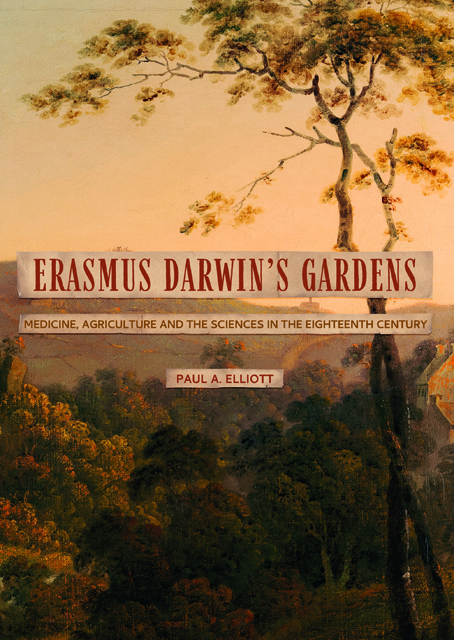Book contents
- Frontmatter
- Contents
- List of Figures
- Acknowledgements
- A Note on Plant Names and Identification
- Introduction
- 1 Lichfield and Derby Gardens
- 2 Medicinal Plants and Their Places
- 3 Agricultural Improvement: Enclosure and the Application of Science and Technology
- 4 Vegetable Physiology, Technology and Agriculture
- 5 Vegetable Pathology and Medicine
- 6 Among the Animals
- 7 Animal Diseases
- 8 ‘Eating of the Tree of Knowledge’: Forestry, Arboriculture and Medicine
- 9 Trees in the Economy Of Nature
- Conclusion
- Select Bibliography
- Index
- Garden and Landscape History
5 - Vegetable Pathology and Medicine
Published online by Cambridge University Press: 14 January 2023
- Frontmatter
- Contents
- List of Figures
- Acknowledgements
- A Note on Plant Names and Identification
- Introduction
- 1 Lichfield and Derby Gardens
- 2 Medicinal Plants and Their Places
- 3 Agricultural Improvement: Enclosure and the Application of Science and Technology
- 4 Vegetable Physiology, Technology and Agriculture
- 5 Vegetable Pathology and Medicine
- 6 Among the Animals
- 7 Animal Diseases
- 8 ‘Eating of the Tree of Knowledge’: Forestry, Arboriculture and Medicine
- 9 Trees in the Economy Of Nature
- Conclusion
- Select Bibliography
- Index
- Garden and Landscape History
Summary
Humans were, of course, regarded as the apex of creation in the eighteenth century, created in the image and likeness of god while the rest of nature, including animals, insects and plants, existed to glorify the divinity and supply materials for human living. Plants as material objects and their products provided everyday foodstuffs, clothing, building and domestic materials, medicines and other substances essential for human existence. Bountiful harvests and productive farms were celebrated in pastoral literature and painting and improving farming literature alike; yet, while conveying luxury in Europe and North America, plant products from tobacco and sugar to cotton were stained with the blood that had been shed growing and harvesting them. Plants also had cultural significance in various ways. With their myriad changing seasonal colours, shapes and structures, they adorned gardens, pleasure gardens, parks and hothouses. Prized exotic specimens were imported from across the globe for the wealthy, educated or discerning or as part of colonial trade or horticultural experiments. Physic and botanical gardens, arboretums and pinetums provided a medical resource and specimens for taxonomic studies. Plants were also the subject of a burgeoning botanical and landscape aesthetic literature in the eighteenth century, evoking and defining particular places and changing their meanings according to context.
While, as we shall see, scholars have increasingly recognised animal agency above mere passive human usage, there has also been increasing emphasis upon vegetable agency and an effort to recover the actions not only of plants themselves, their coadjutors and allies in an interdependent world, but also of their enemies. As a physician, Darwin valued plants for their medicinal value, which led him into the study of botany and natural history. Prior to the development of industrialised chemical and synthesised processes for drug production from the nineteenth century, plant and animal products and other naturally occurring substances were the key ingredients in most medicines and some botanical education was an adjunct to a university medical education as well as in the schooling of apothecaries. Darwin encountered animals and plants in multiple contexts both in wild and semi-wild habitats and nurtured on farms and estates. He observed wildflowers in the fields and hedgerows, the ancient midlands forests and extensive, richly manured and productive enclosed fields and plantations of improving landowning friends and patients and their families.
- Type
- Chapter
- Information
- Erasmus Darwin's GardensMedicine, Agriculture and the Sciences in the Eighteenth Century, pp. 149 - 170Publisher: Boydell & BrewerPrint publication year: 2021

